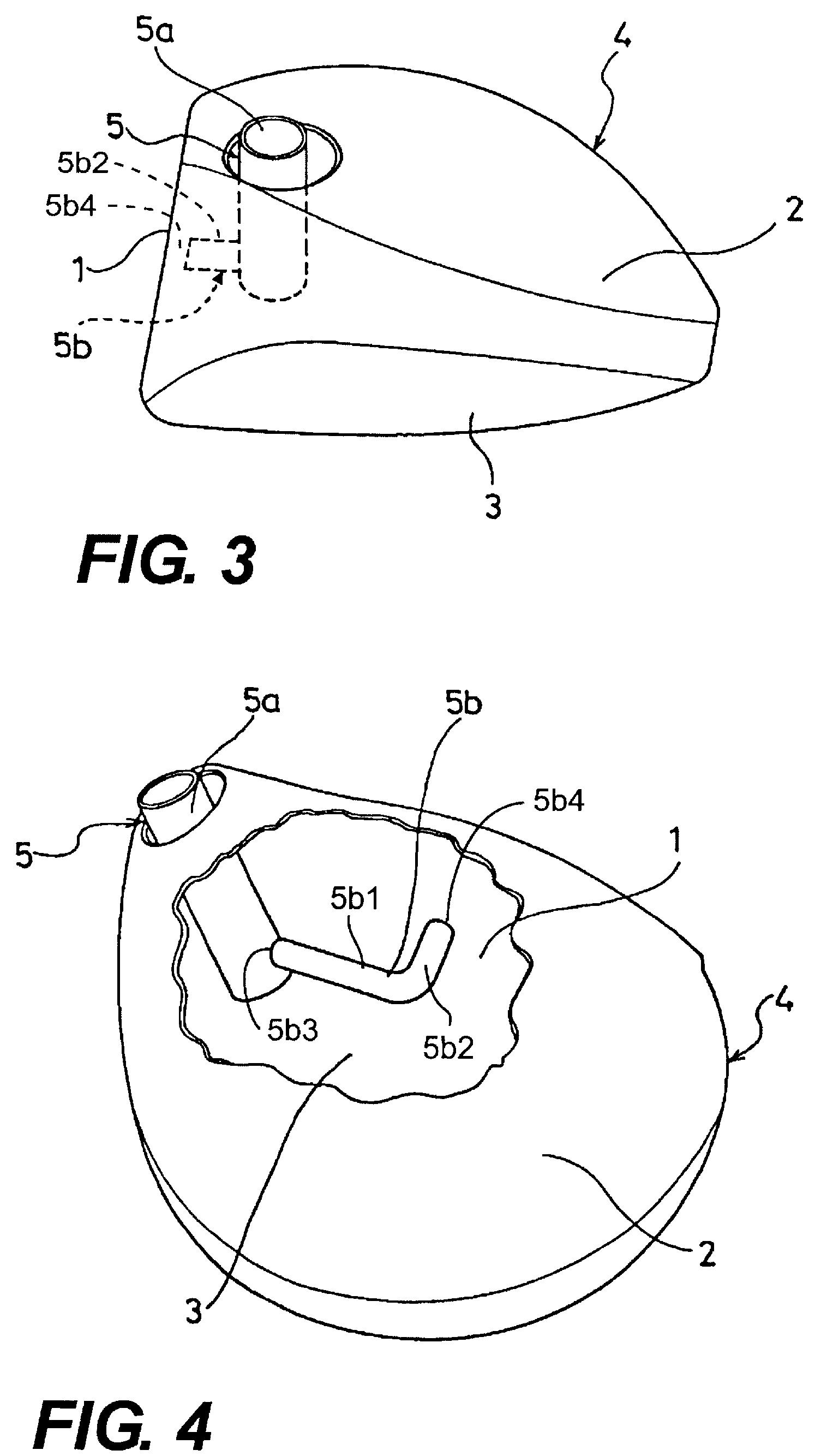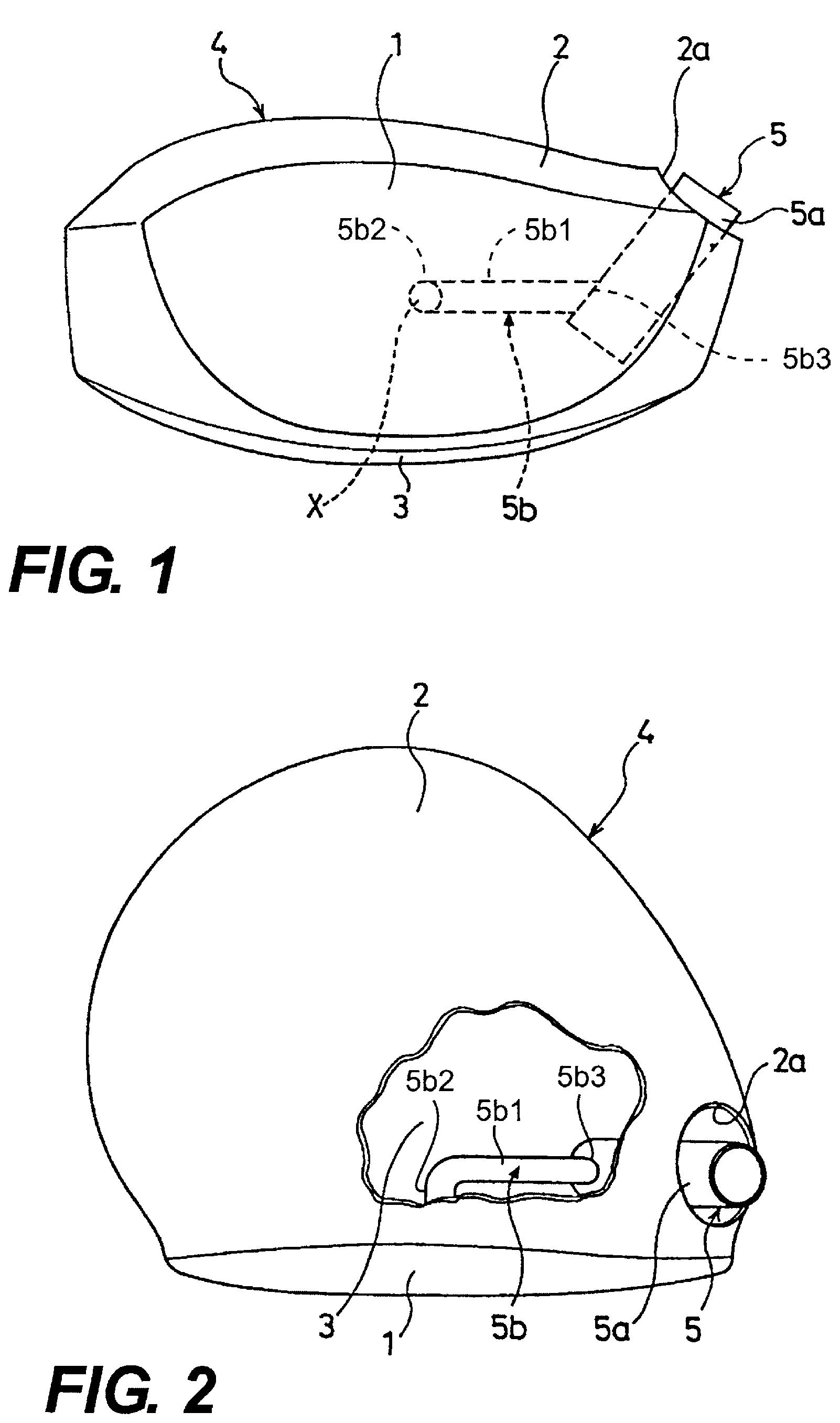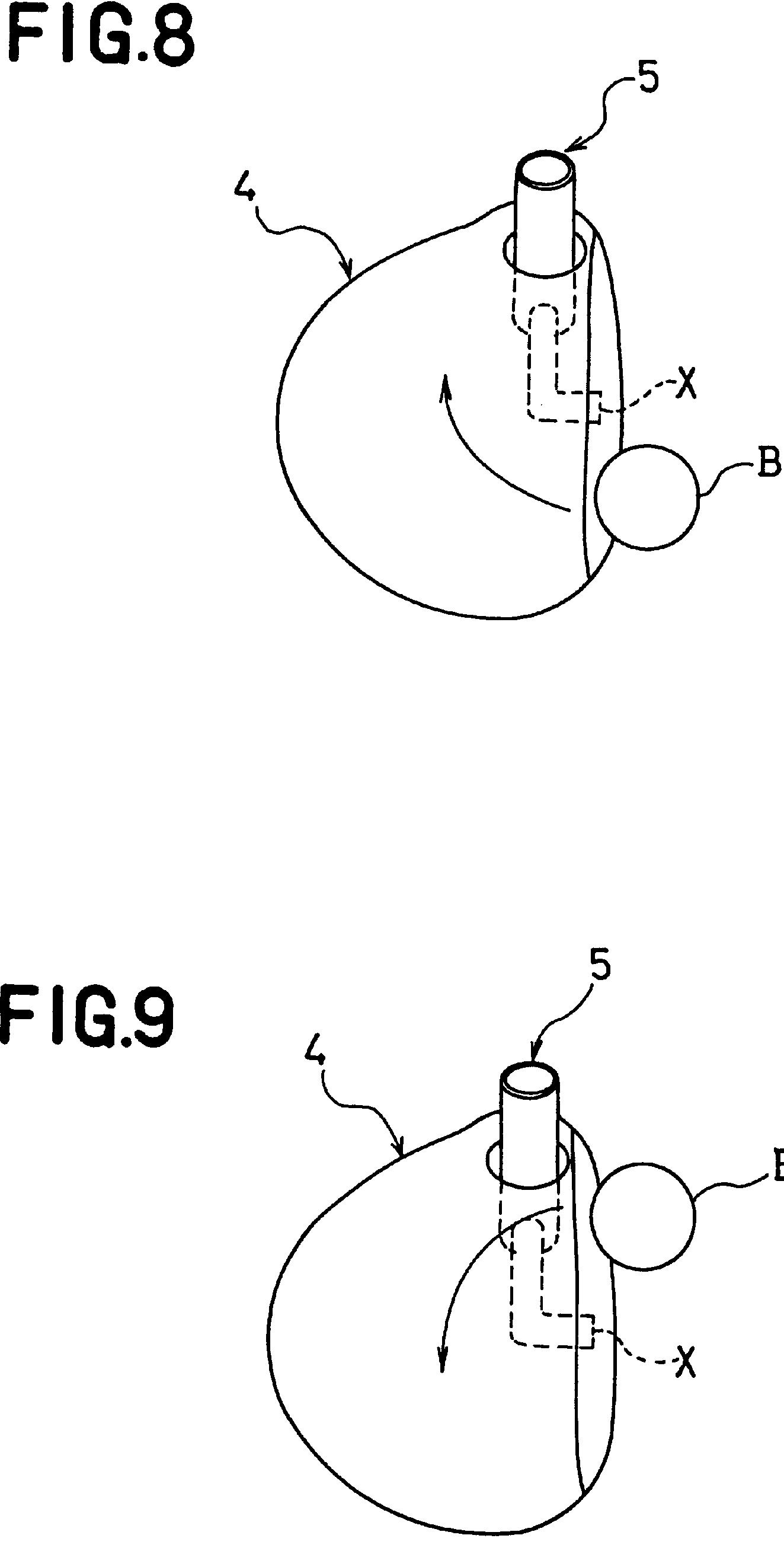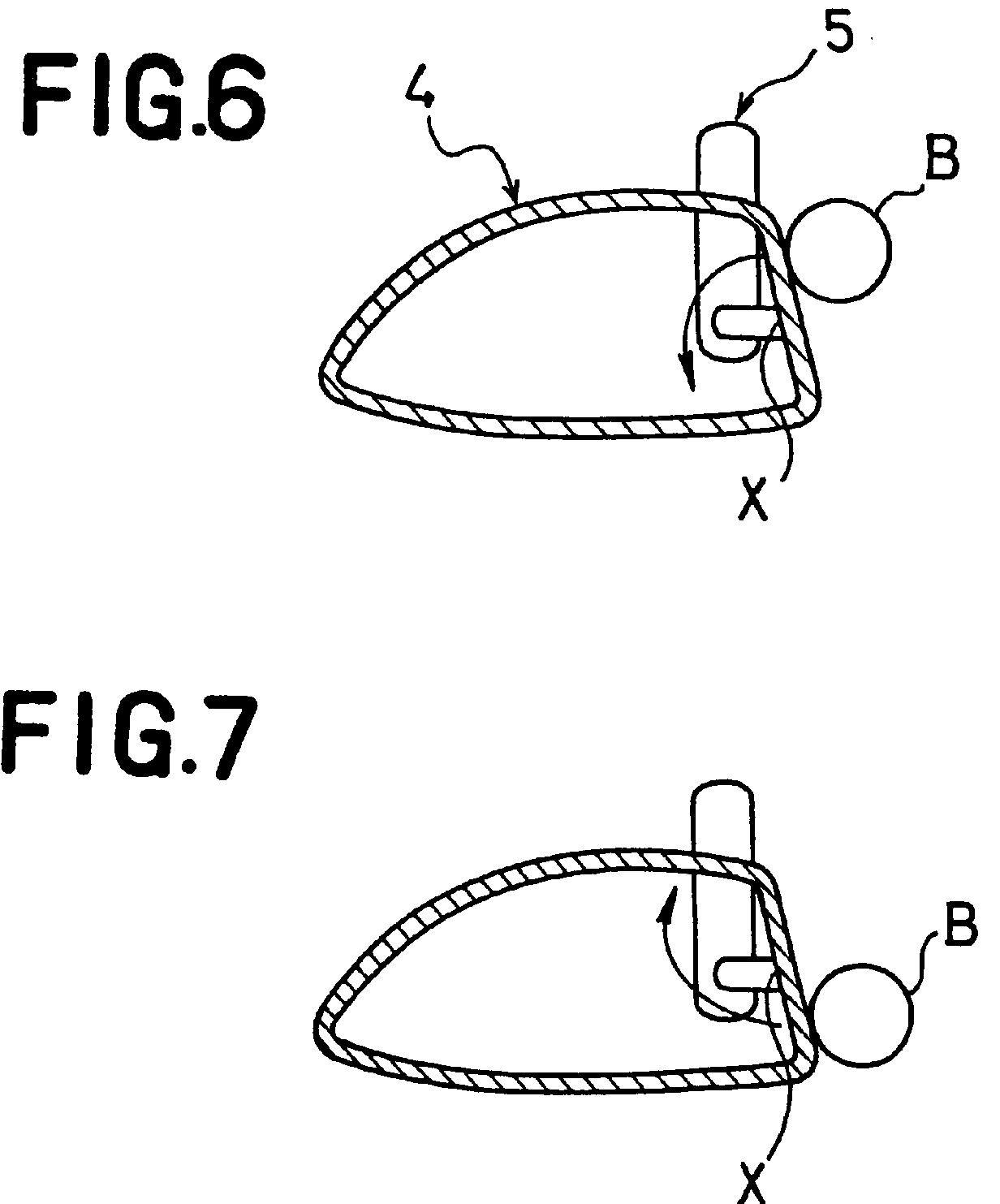Have You Ever Wondered if There is a Better Way to Connect a Shaft to a Golf Club Head? Bizarre Golf Club Patent of the Week
Have you ever considered why a shaft connects to a hosel? Ever spend a sleepless night wondering if there was a better way? Me neither, but that is probably why I am not a golf club designer and inventor. The inventors of USPN 6514153 titled “Golf Club Head” have definitely questioned the wisdom of the traditional shaft – to hosel – to club head body attachment strategy. Check out this design.




The patent explains:
The present invention relates to a golf club head having a hollow structure. More particularly, the present invention relates to a golf club head that makes it possible to increase a carry and to improve a ball direction control.
When the golf club head hits a ball off from its sweet spot, rotation occurs around the center of gravity of the golf club head, thus giving the ball a spin. Such a mechanism of the spin occurrence is generally called a gear effect. It is known that, according to the gear effect, the spin is given in a direction that brings a ball landing point to the central area of a golf course when a striking point is off from the sweet spot in a toe or heel direction, and the spin is given in a direction that increases the carry when the striking point is off from the sweet spot in an upper or lower direction.
However, since the golf club head generally has a stiff constitution in which a hosel portion is joined to a crown portion, only the rotation around the center of gravity is obtained when the ball is stricken off from the sweet spot. Thus, the carry-increasing effect and the improving effect of the ball direction control by the gear effect have been insufficient.
SUMMARY OF THE INVENTIONThe object of the present invention is to provide a golf club, in which a relative displacement between a head main body and the hosel portion is permitted when a ball is stricken, thereby making it possible to increase a carry and to improve a ball direction control.
The golf club head according to the present invention to achieve the foregoing object is characterized in that the head main body of a hollow structure is formed of; a face portion having a face surface; the crown portion adjacent to the face portion; and a sole portion adjacent to the face portion, a through hole for inserting a shaft into the crown portion is provided, the hosel portion for supporting a tip portion of the shaft is joined to a back surface of the face portion, and the hosel portion is made to be in a non-contact state with the crown portion.
As described above, since the hosel portion for supporting the tip portion of the shaft is joined to the back surface of the face portion, and the hosel portion is made to be in the non-contact state with the crown portion, the relative displacement between the head main body and the hosel portion is permitted according to an impact when a ball striking position does not coincide with the joined portion between the hosel portion and the face portion. As a result, an appropriate spin is given to the ball and further increase of the carry and further improvement of the ball direction control can be achieved.
Moreover, there is an advantage that a break of the shaft can be prevented, because the head main body and the hosel portion relatively displace to reduce a load to the shaft.In the present invention, blocking a gap between the through hole of the crown portion and the hosel portion with an elastic member prevents a foreign object from entering the head main body from the through hole. The elastic member does not interfere with the relative displacement between the head main body and the hosel portion, and can be constituted of rubber or resin.
The joined portion between the hosel portion and the face portion can be arranged at a position that coincides with the sweet spot of the face surface or a position off from the sweet spot. When the joined portion between the hosel portion and the face portion is arranged at the position that coincides with the sweet spot of the face surface, the above-described increasing effect of the carry and the improving effect of the ball direction control can be obtained. On the other hand, when the joined portion between the hosel portion and the face portion is arranged at the position off from the sweet spot of the face surface, a spin characteristic of the ball can be optionally set at a golfer’s request.
In the present invention, the sweet spot means a crossing point of a perpendicular line from the center of gravity of the head main body to the face surface, and the face surface. The position that coincides with the sweet spot of the face surface means a position where at least a part of the joined portion between the hosel portion and the face portion overlaps the sweet spot. On the other hand, the position off from the sweet spot of the face surface means a position where the joined portion between the hosel portion and the face portion does not overlap the sweet spot at all.
What do you think? Pure, or shank? Birdie, or bogey?
Dave Dawsey – Keeping an Eye on Golf Inventions
PS – click here to check out other driver and wood design posts
